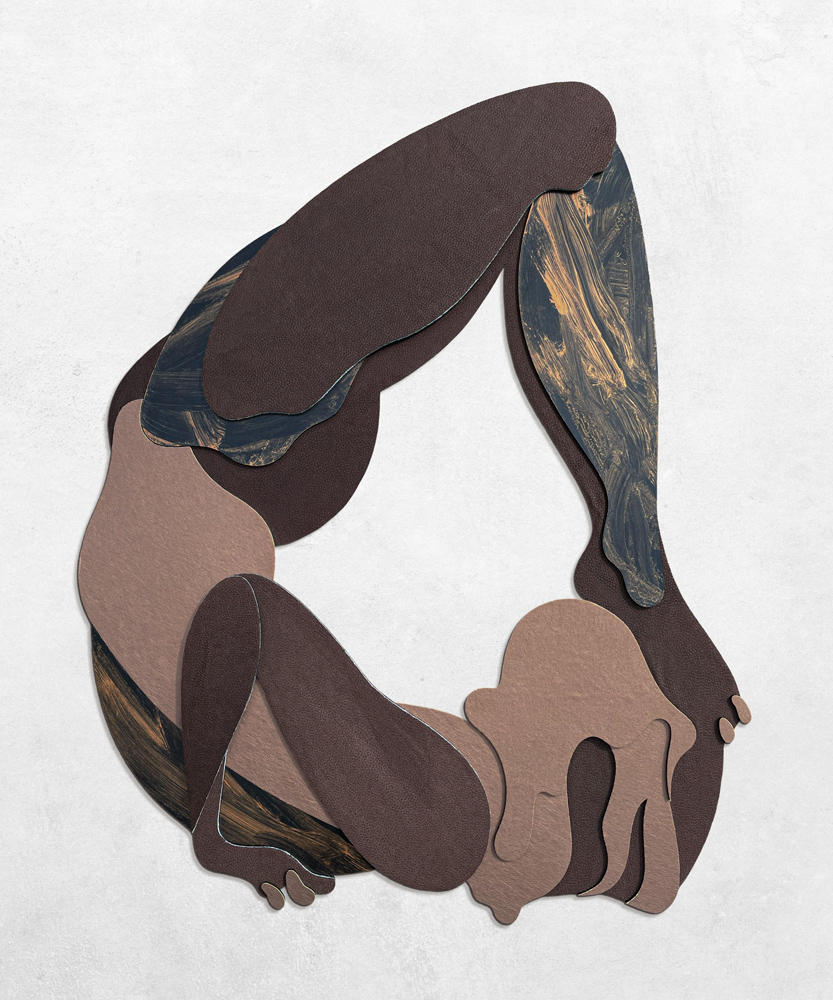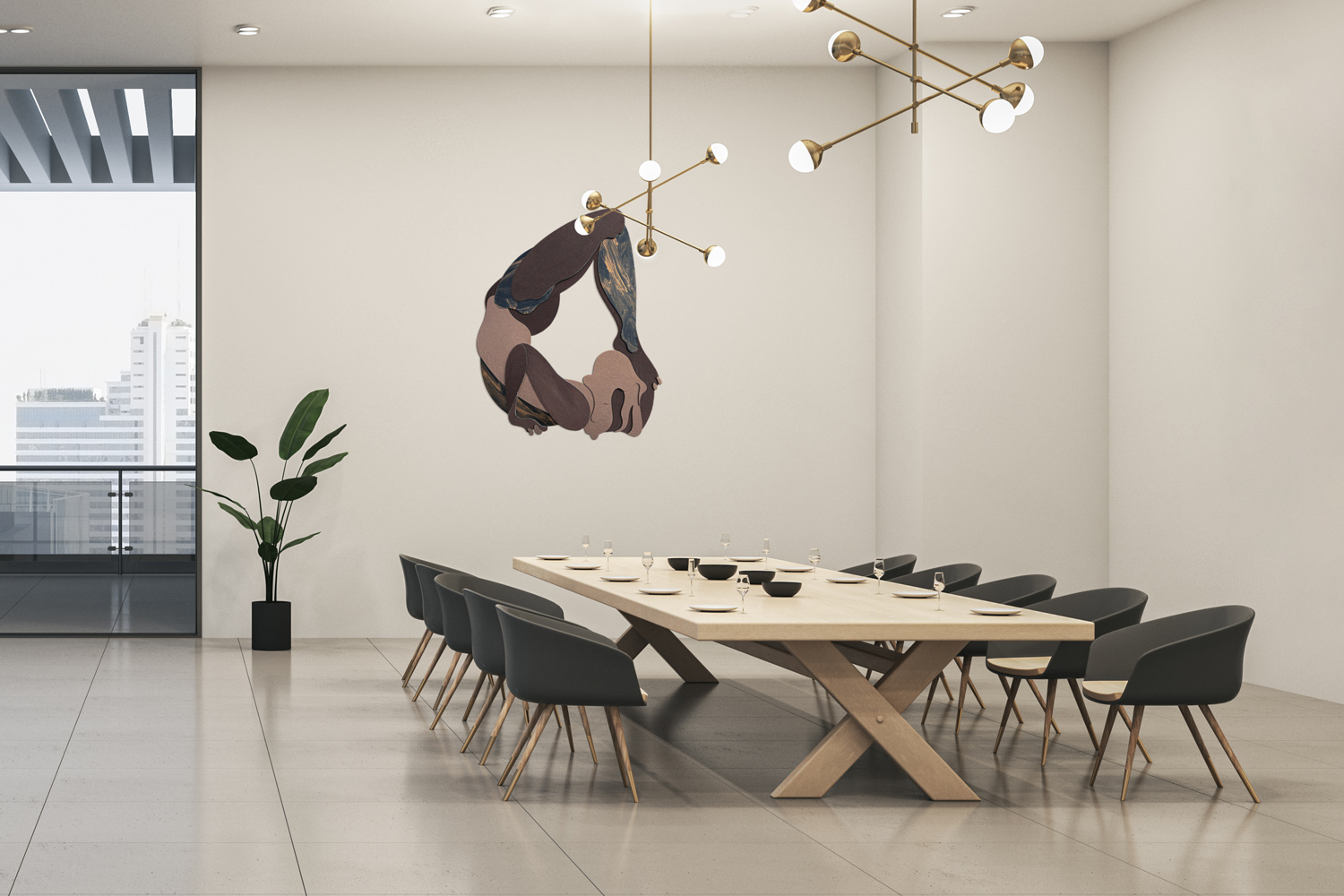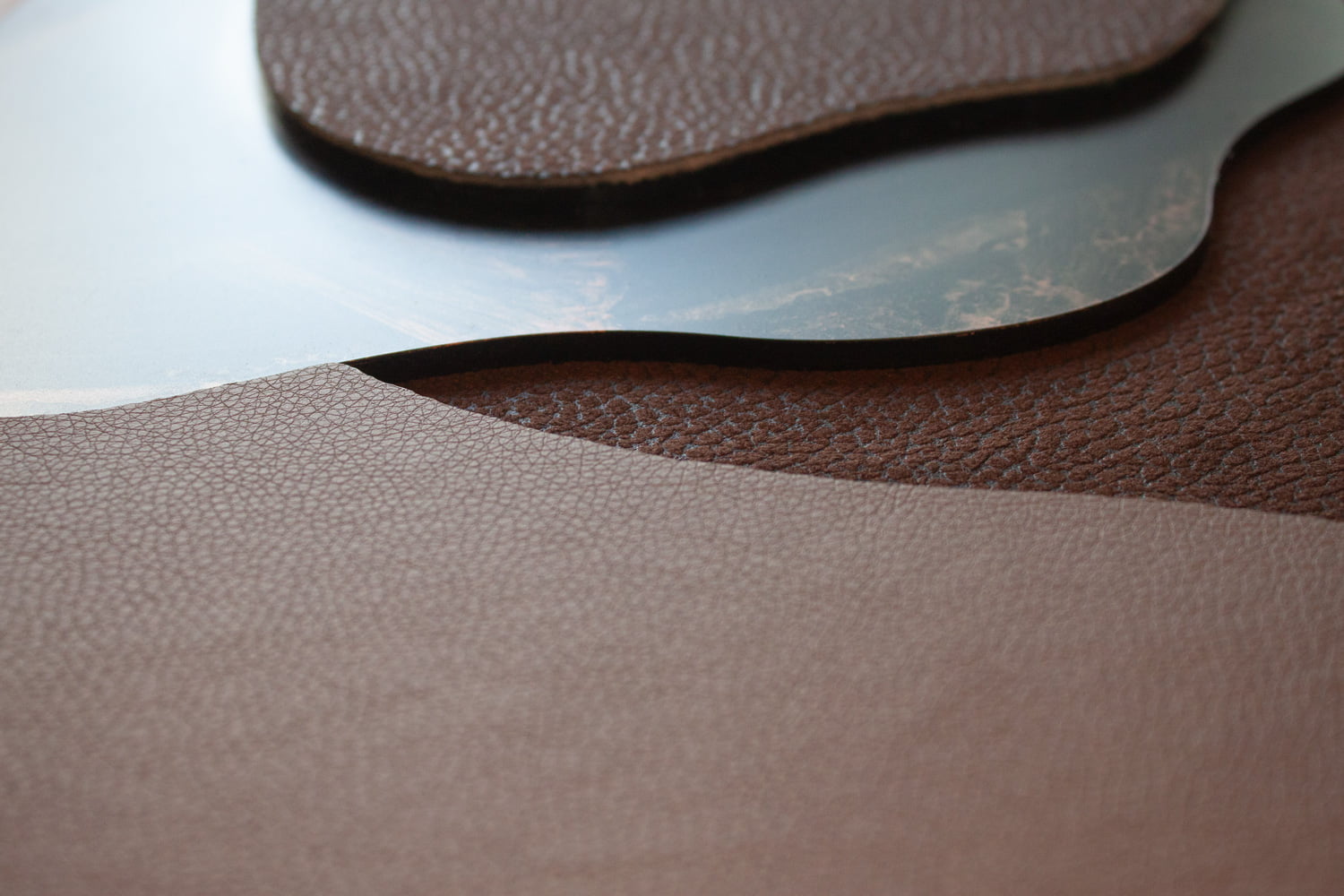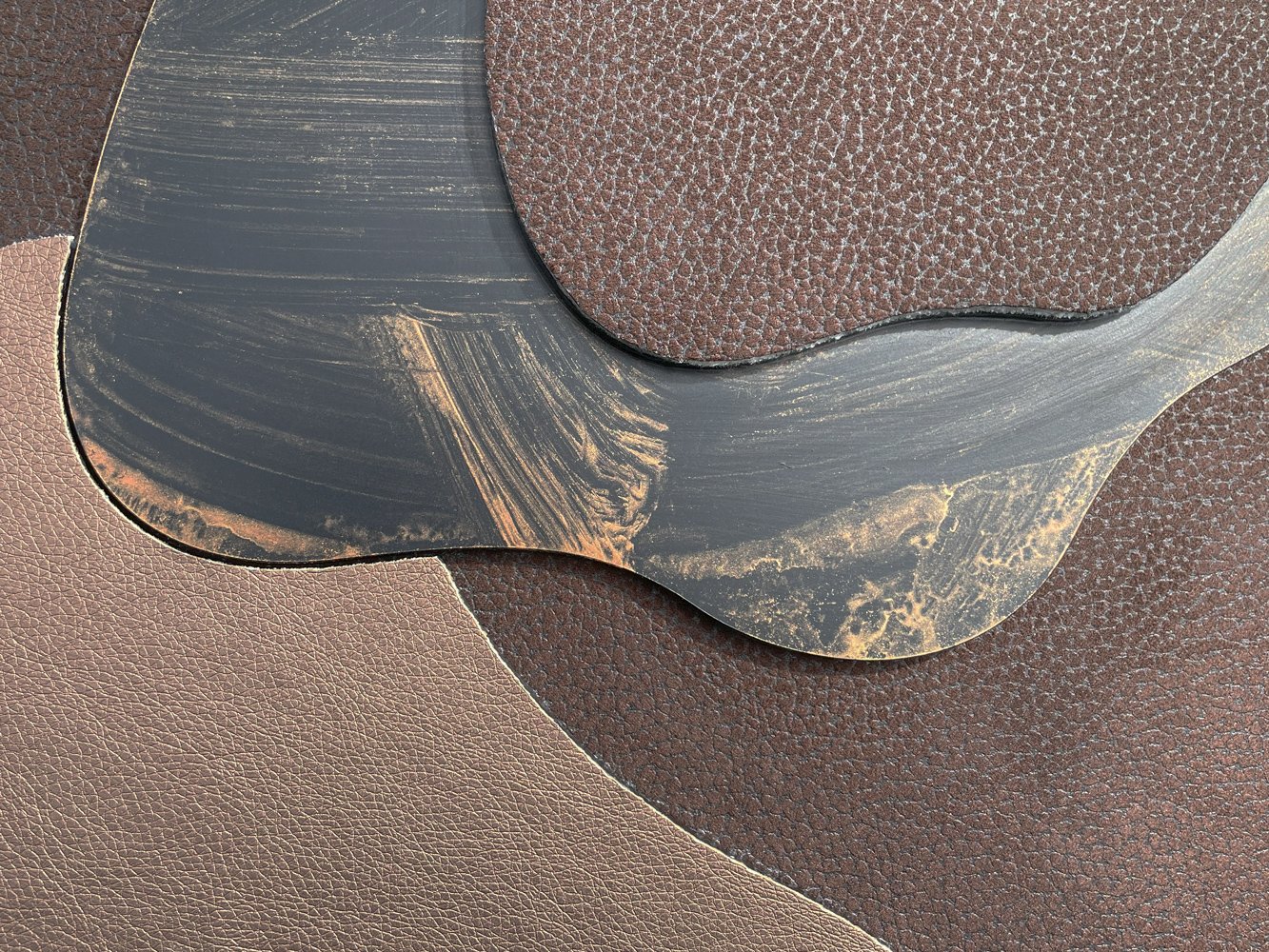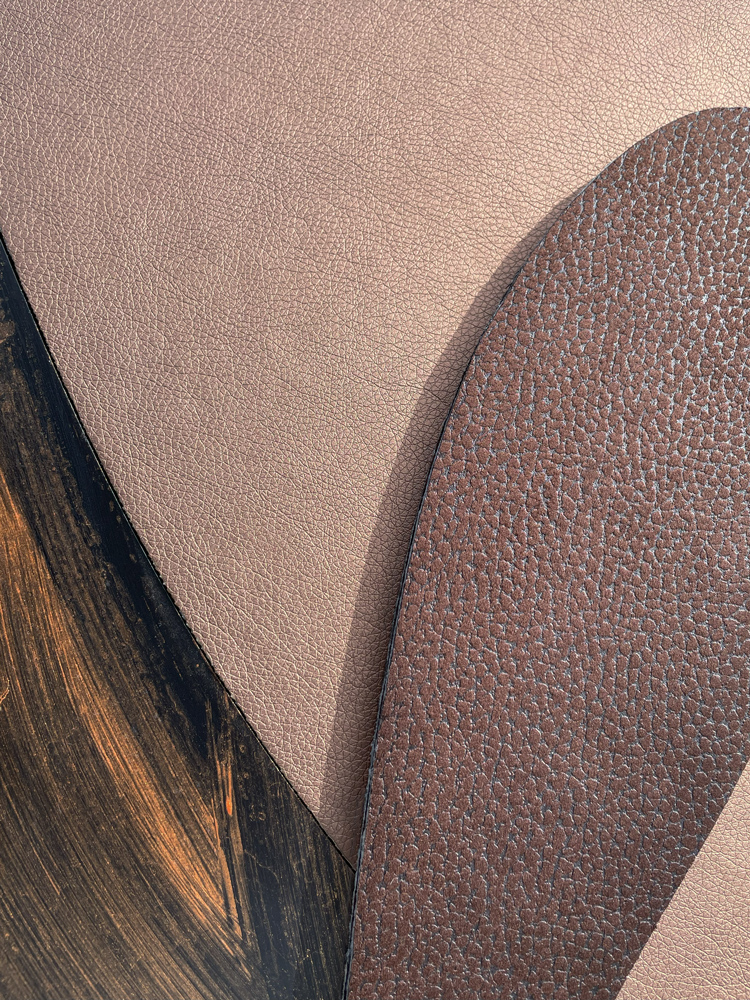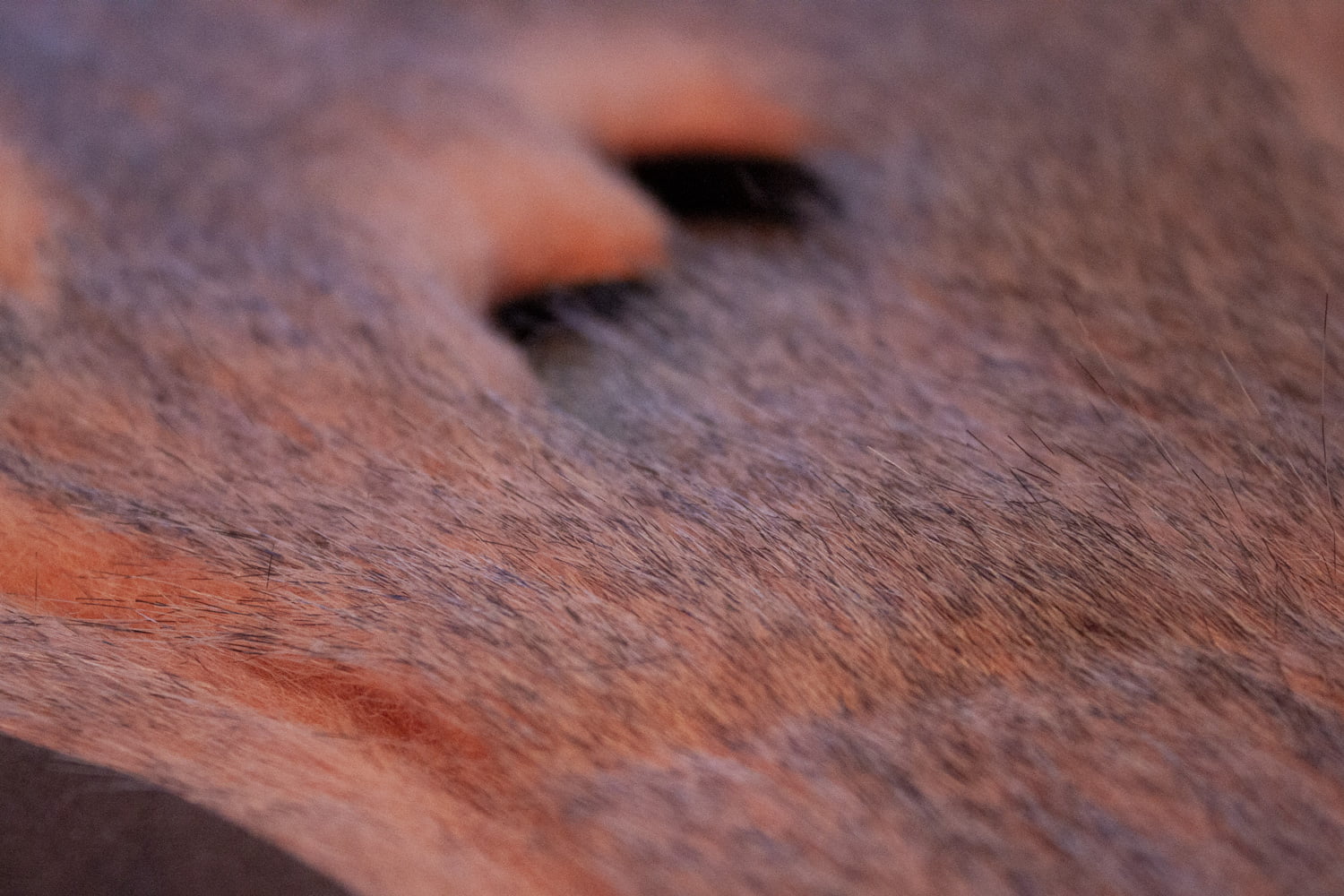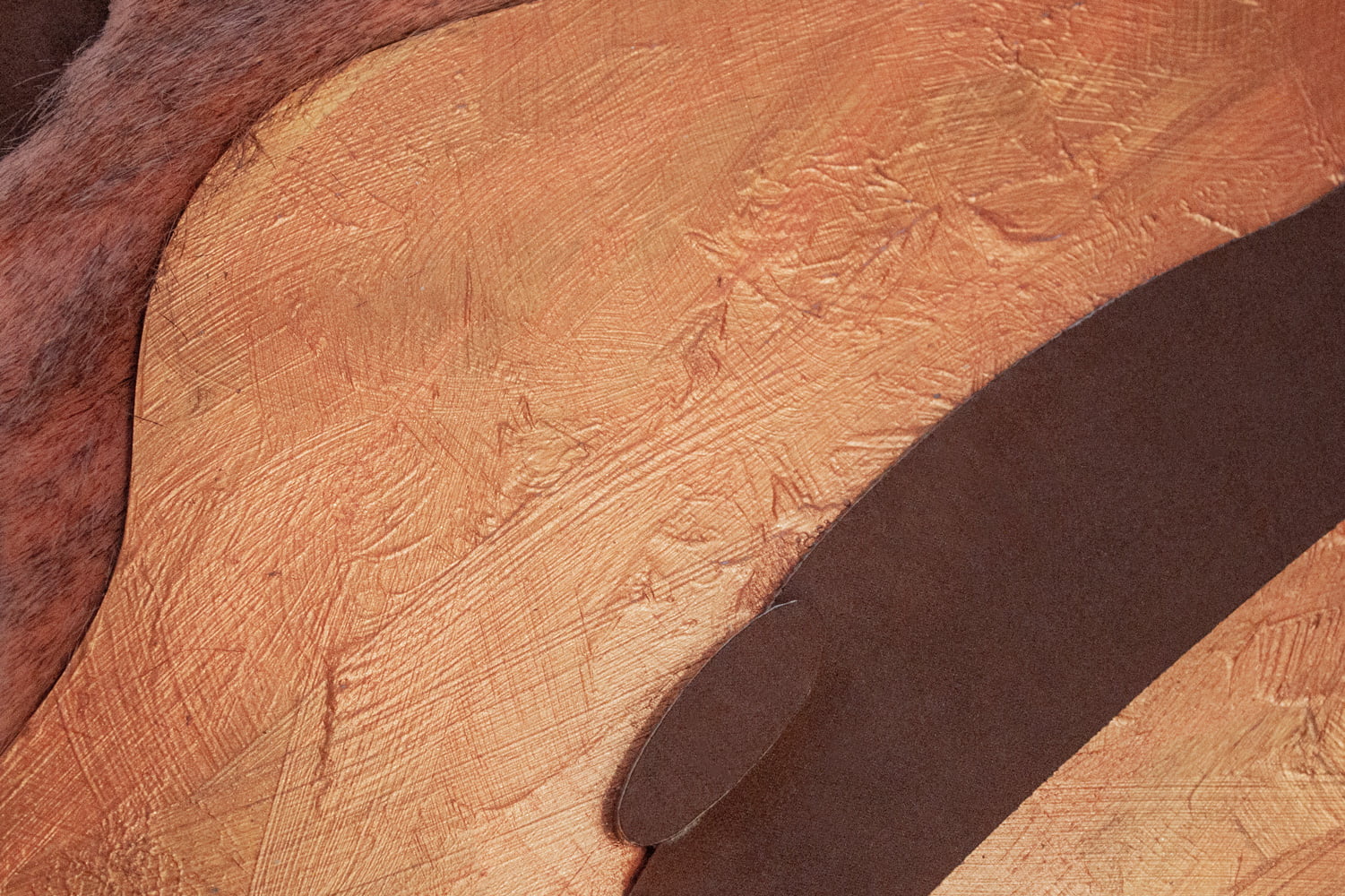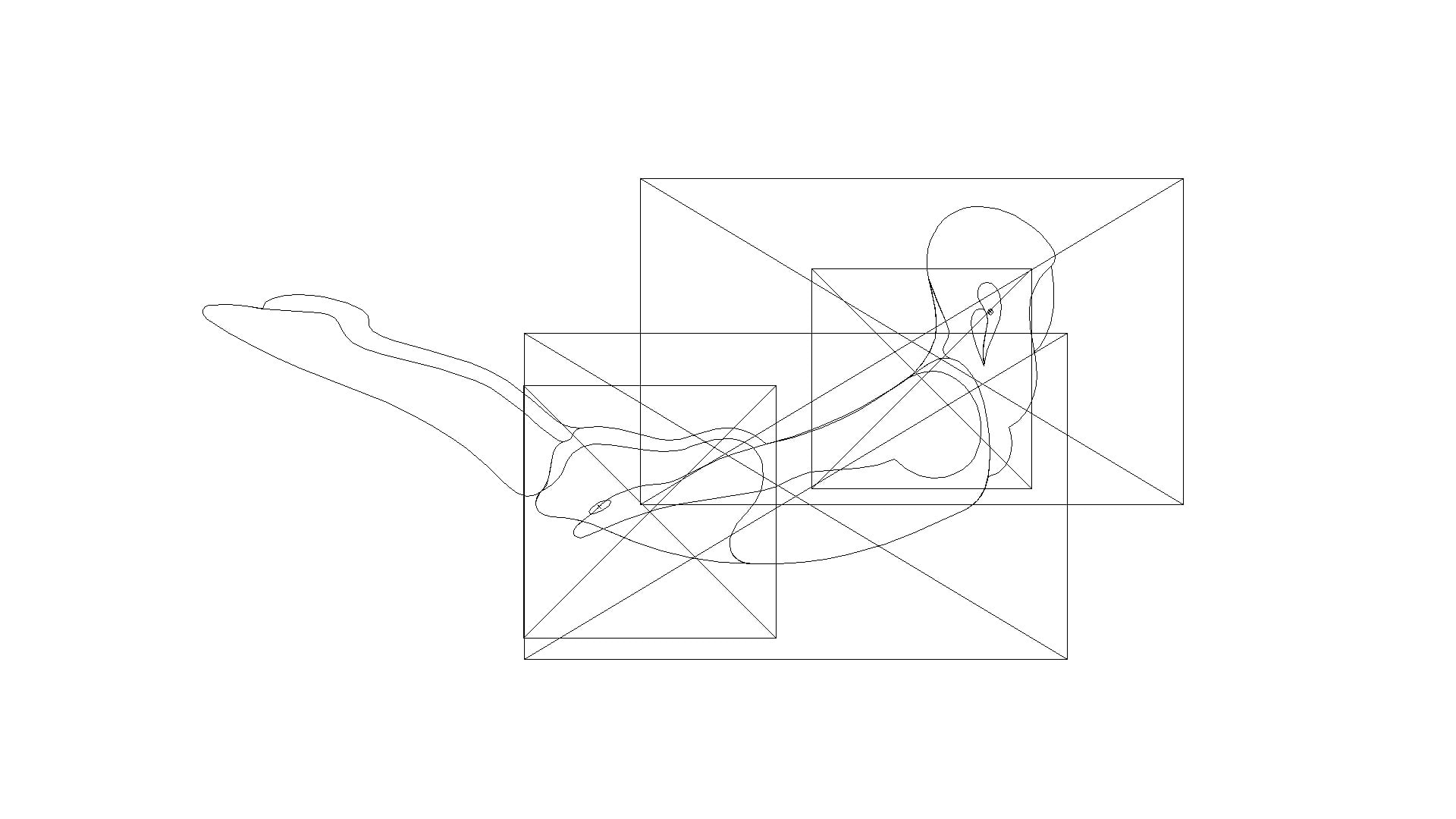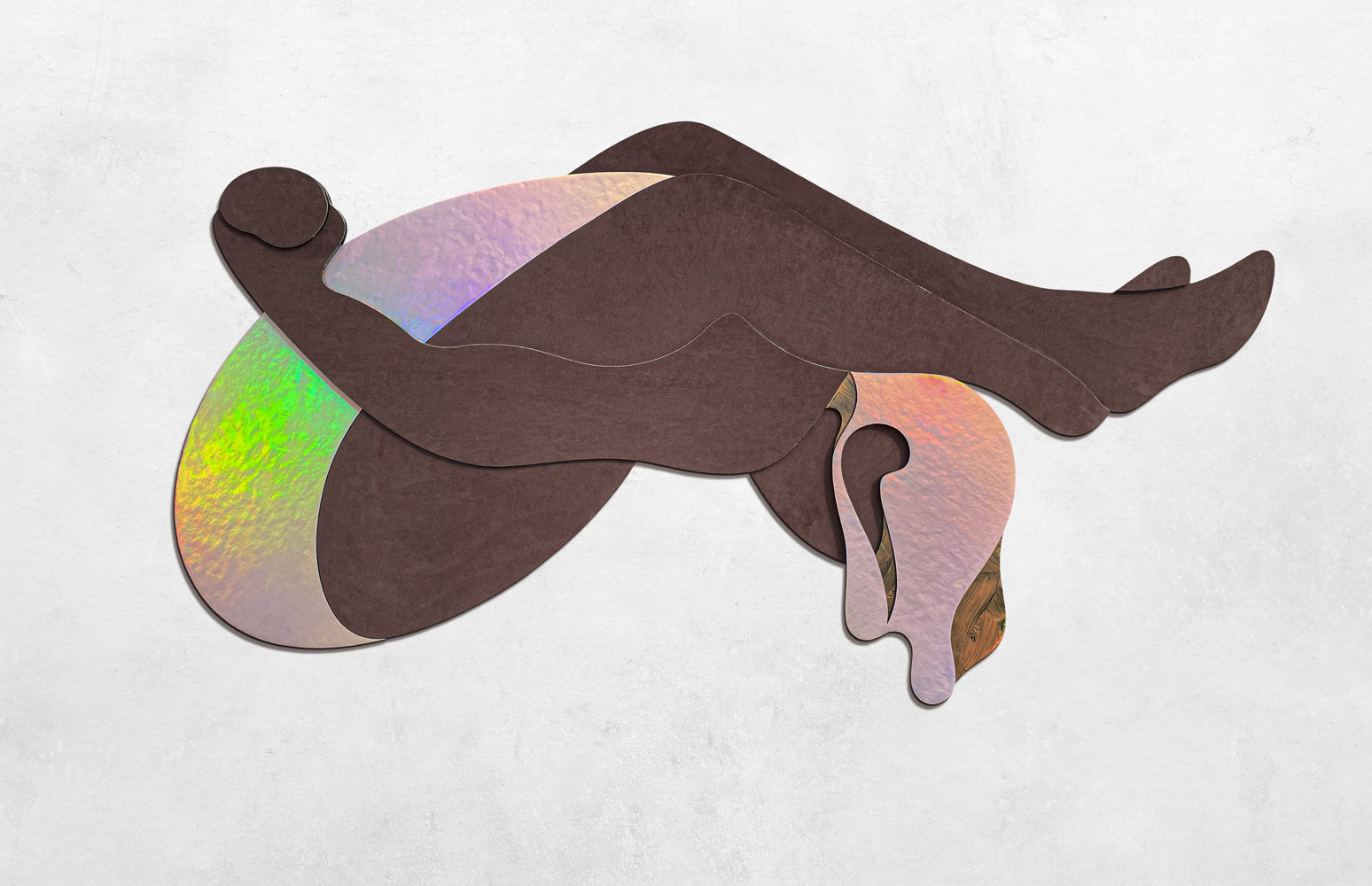
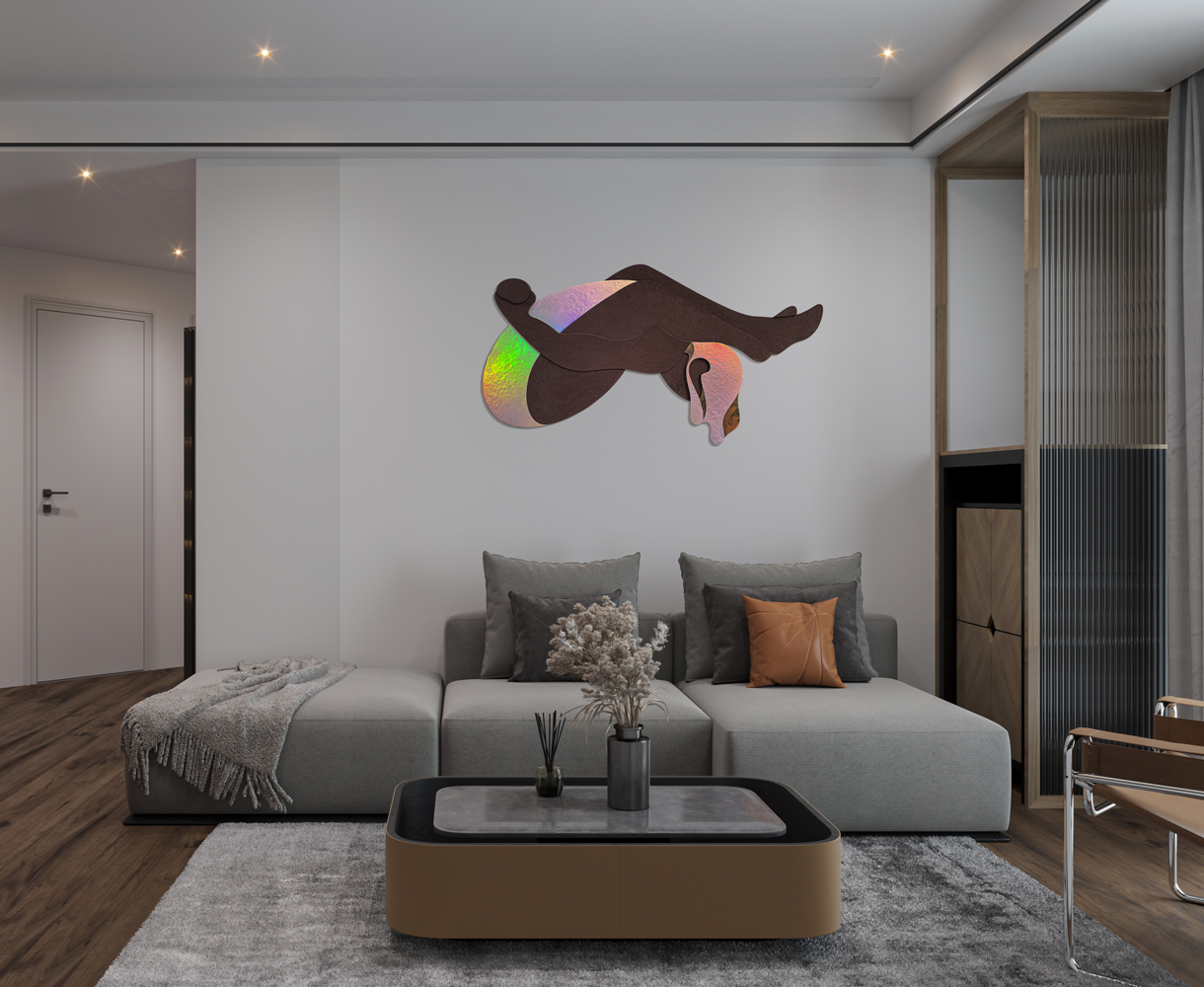
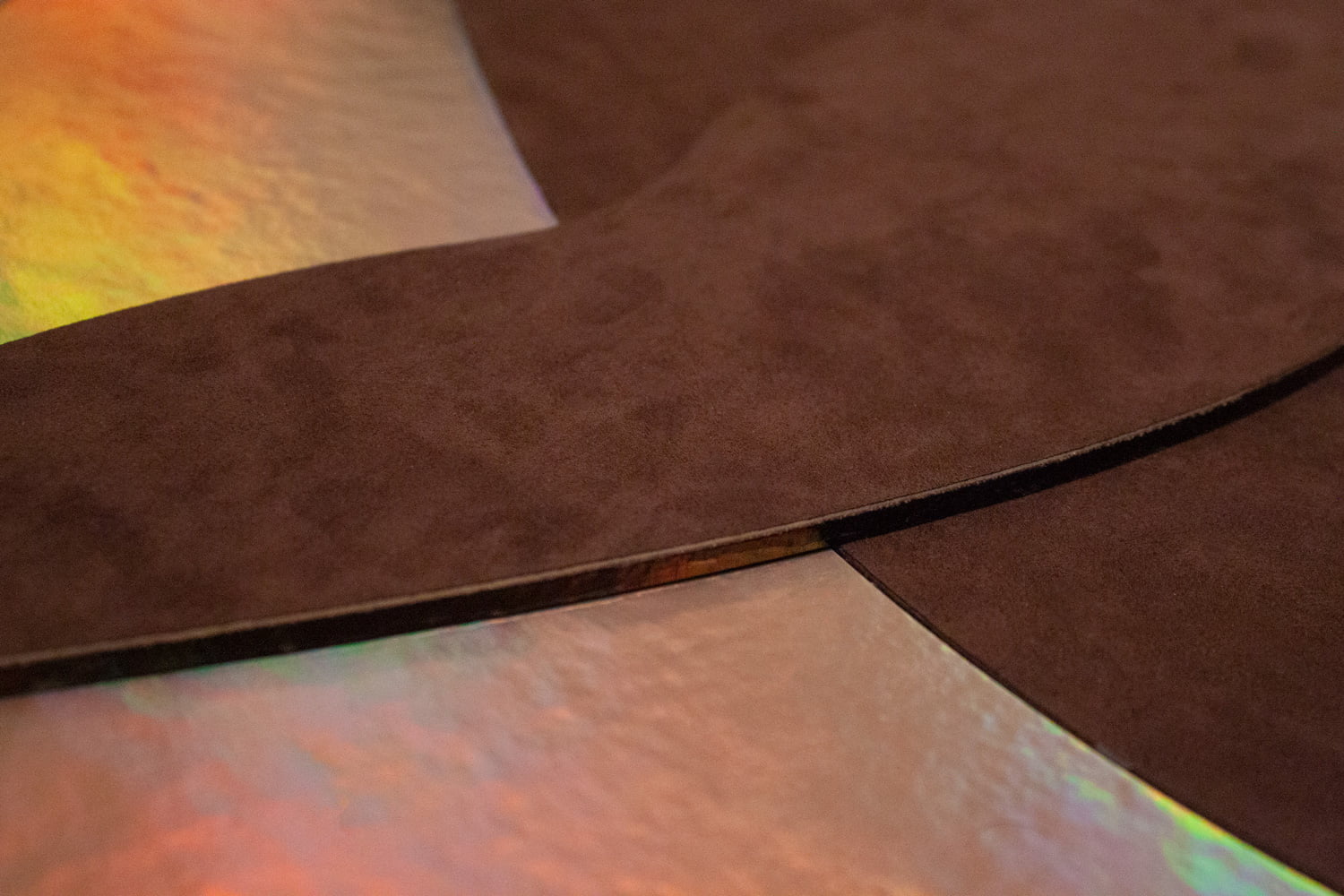


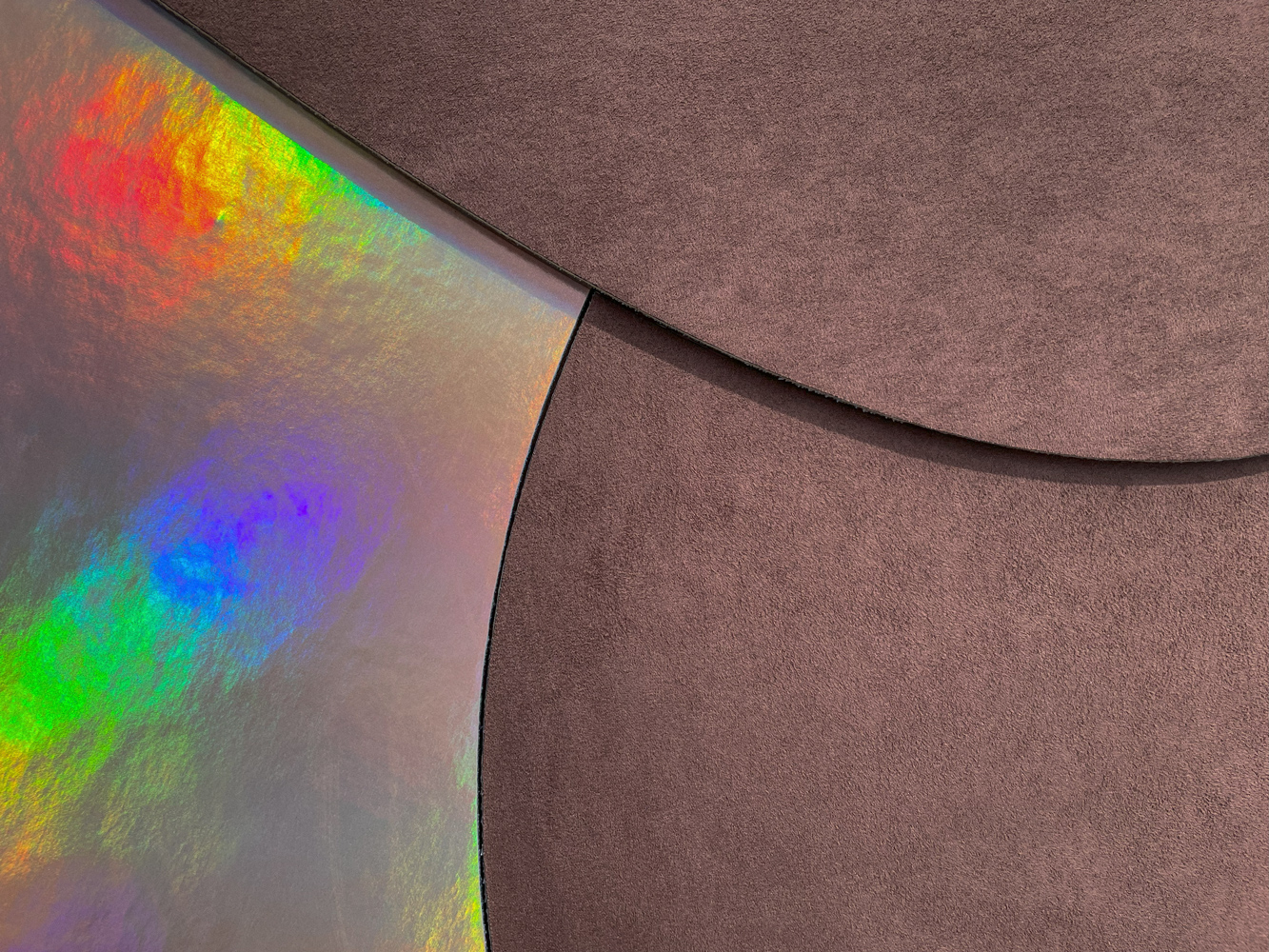
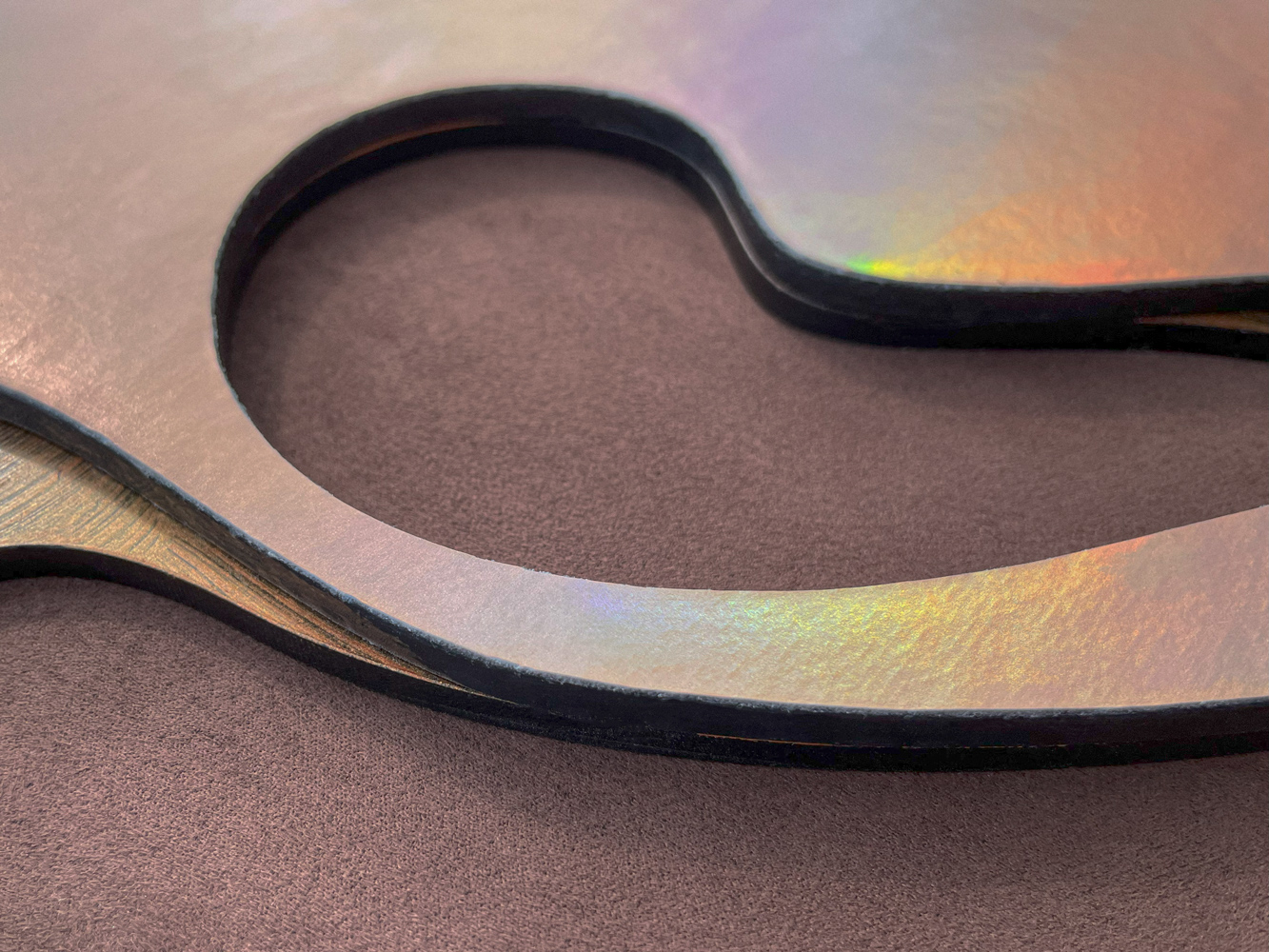
Supta Kurmasana is the Sleeping Turtle. When a turtle sleeps, it is in a safe environment and can hardly be disturbed. In this posture, the limbs, ears, eyes, nose, skin, mouth, and mind withdraw inward, toward an inner landscape that leads to Pratyahara and invites us to discover a sanctuary within, independent of the external world.
This artwork encourages movement and gently reminds us not to stay stagnant for too long. The serene posture of the Sleeping Turtle invites reconnection with the body and a return to the stage of mindful motion in everyday life.
Key benefits of Supta Kurmasana include: deep stretching of the spine, hips, glutes, thighs, and hamstrings; calming of the nervous system; stimulation of internal organs; and support for self-reflection, focus, emotional processing, humility, patience, and respect for one’s boundaries.
Namaste!
151x81x3 cm
acrylic, various textile on plastic panels
